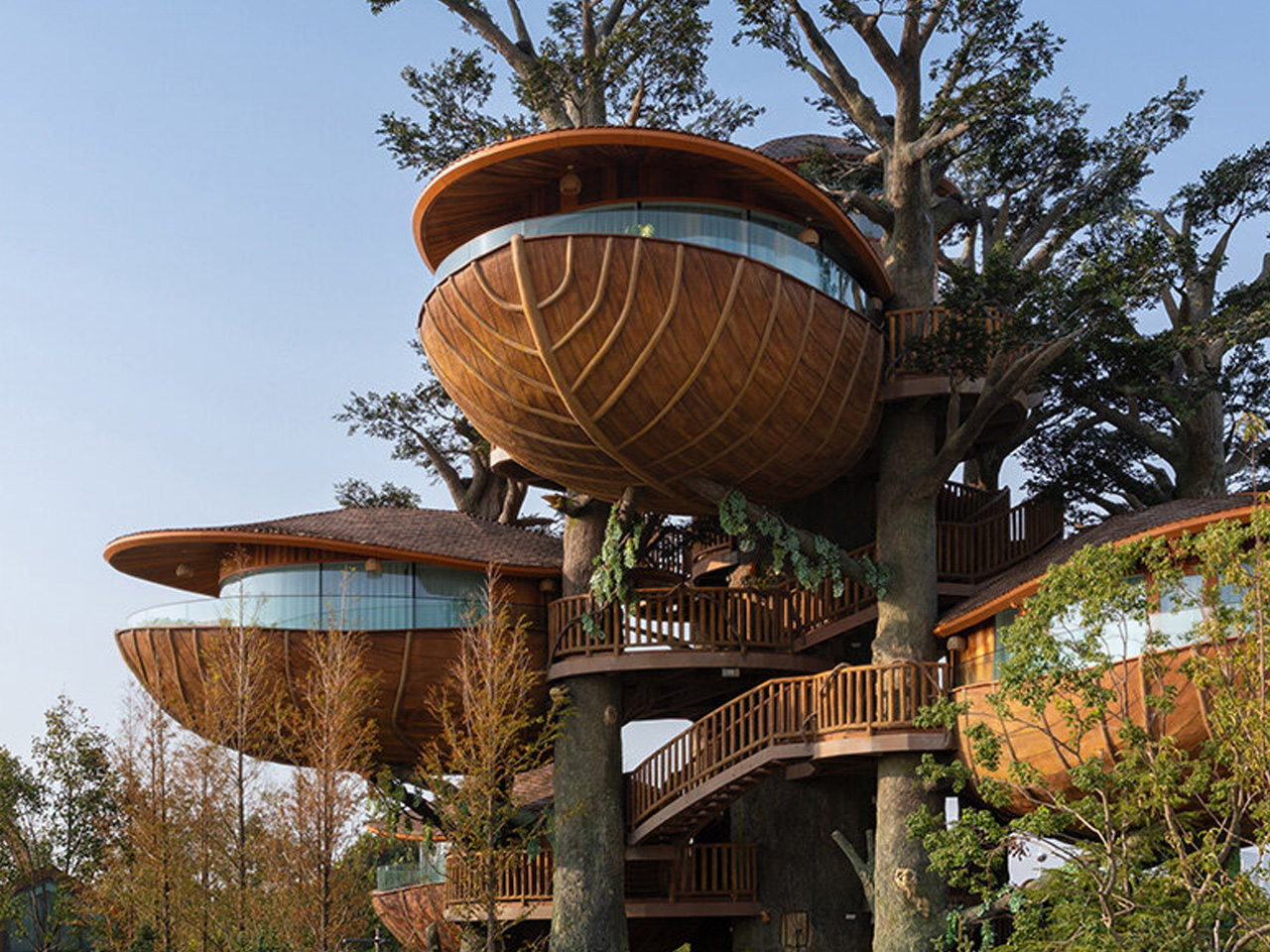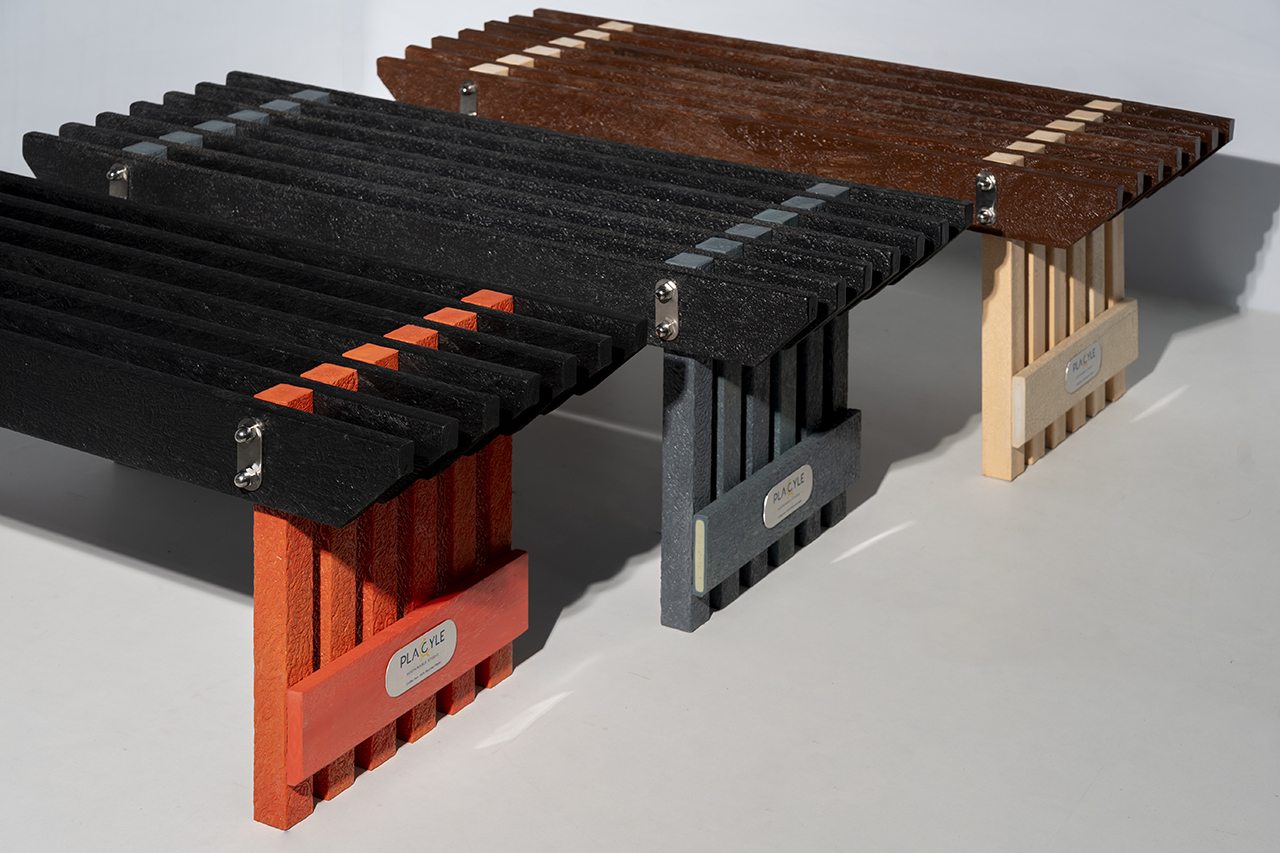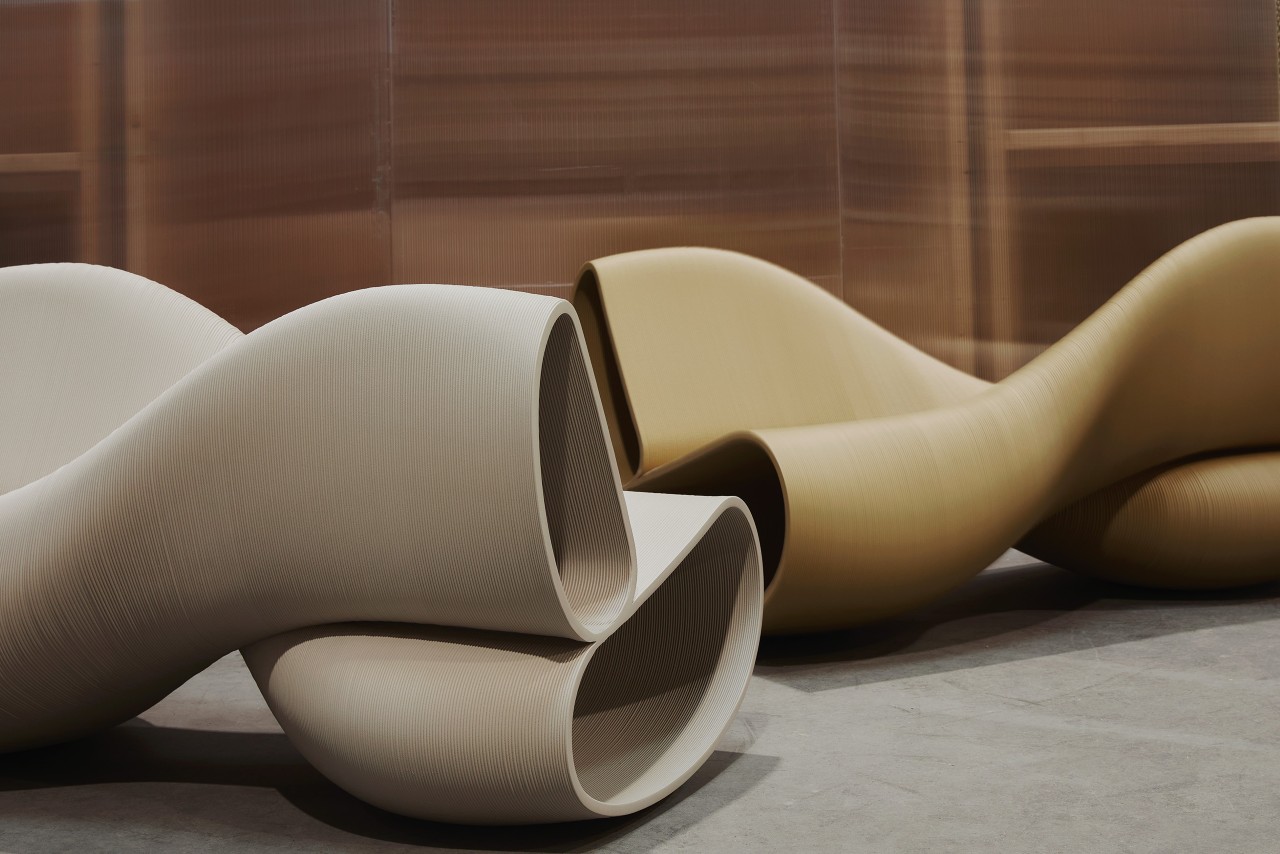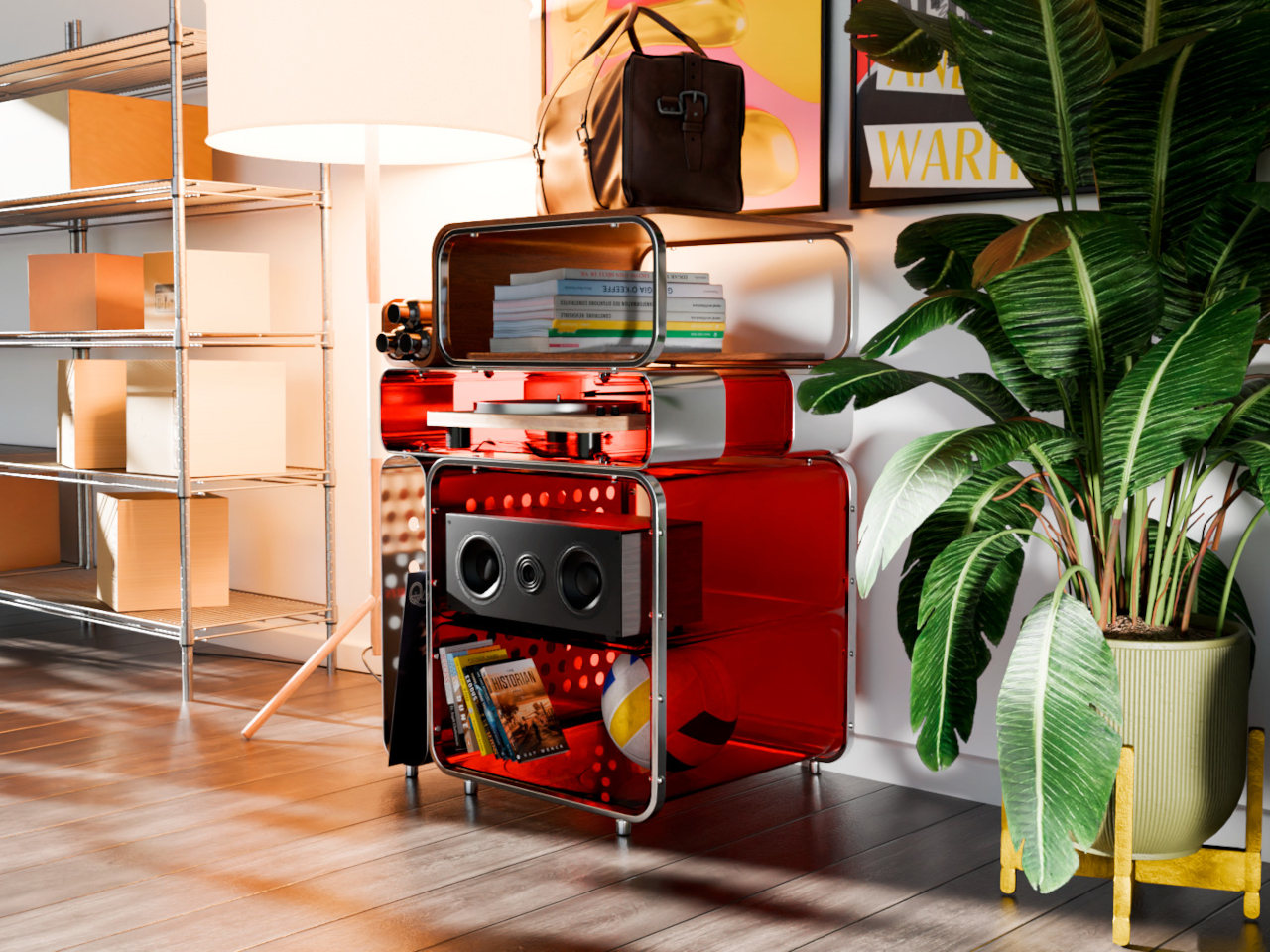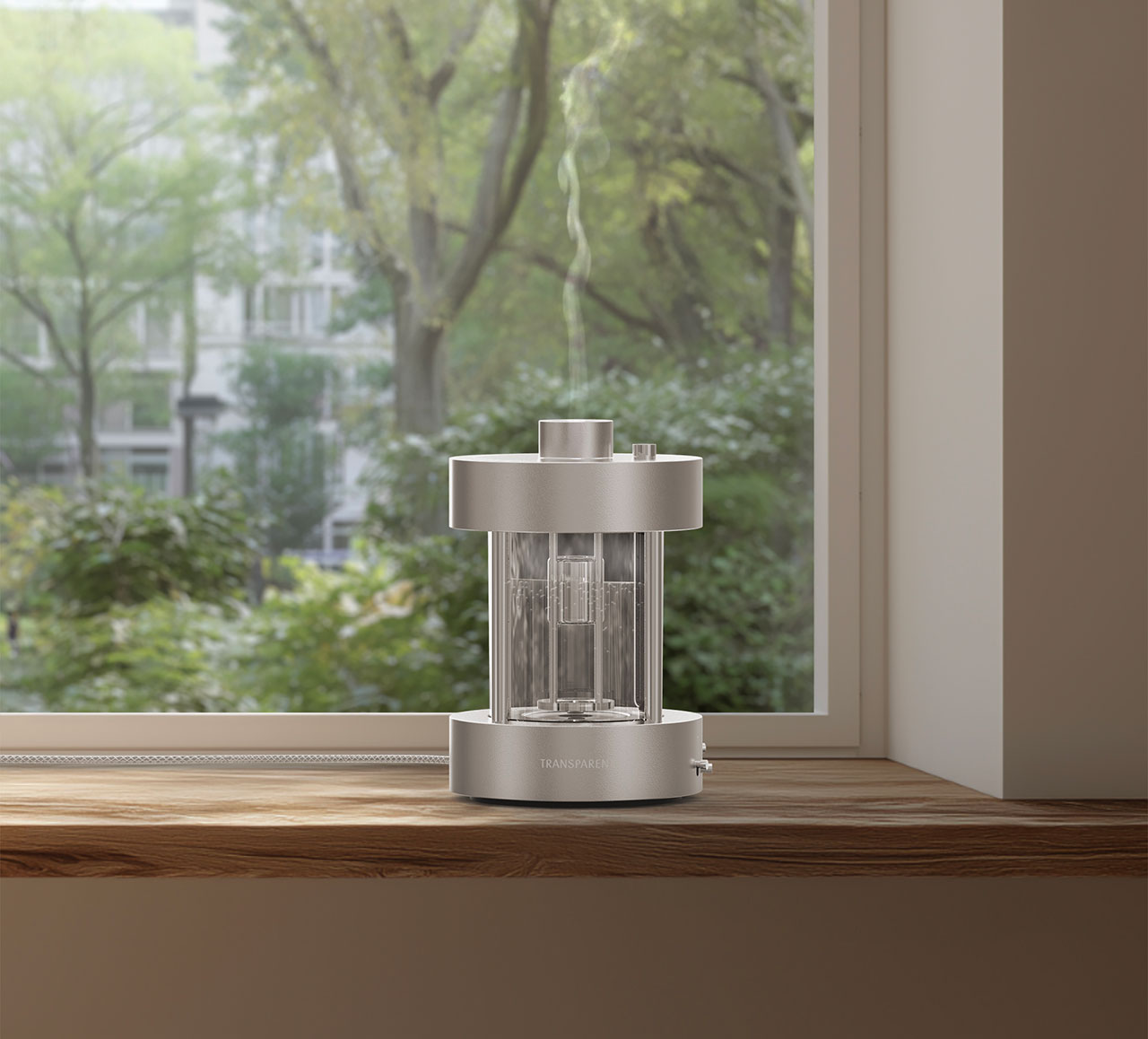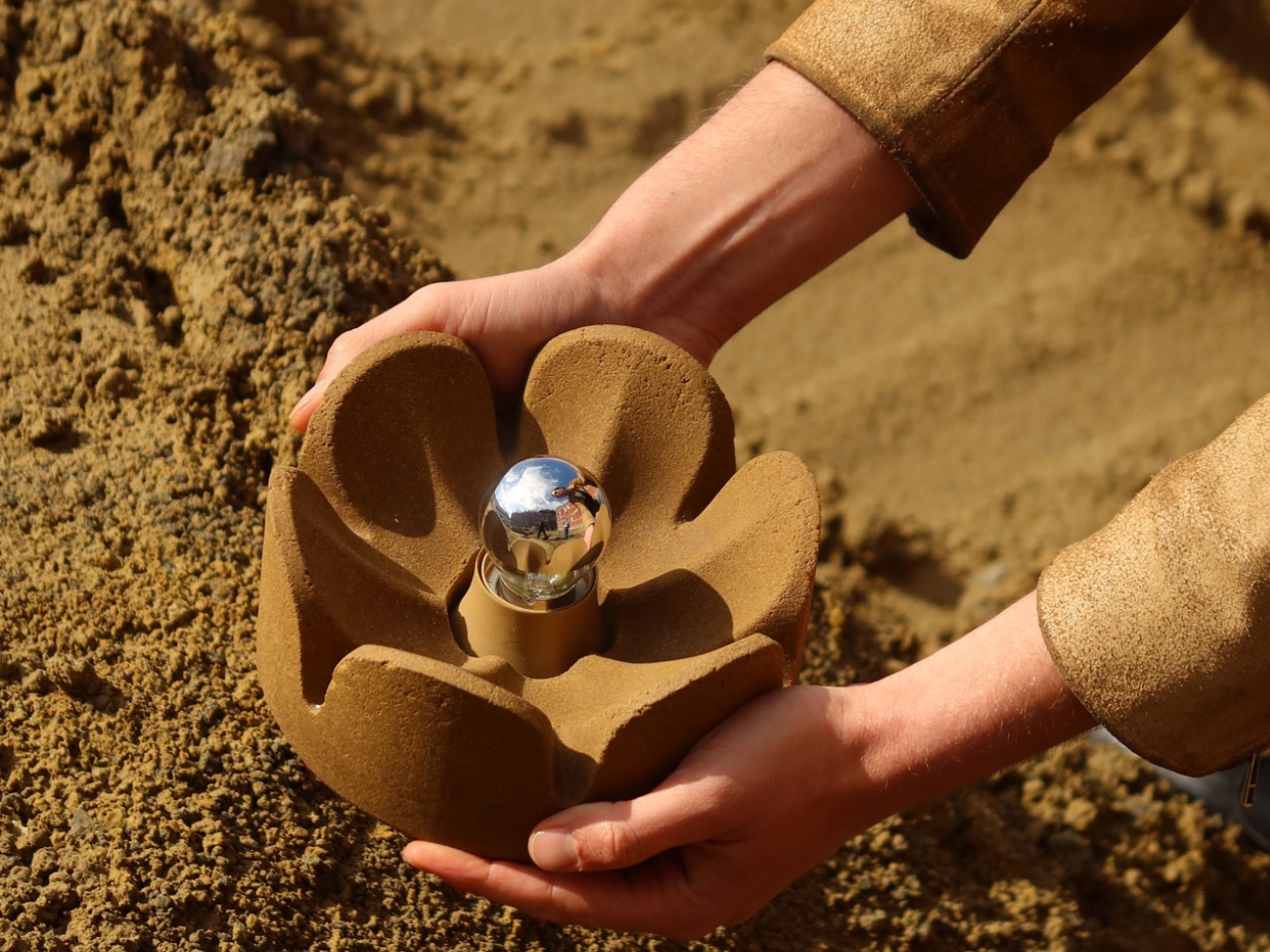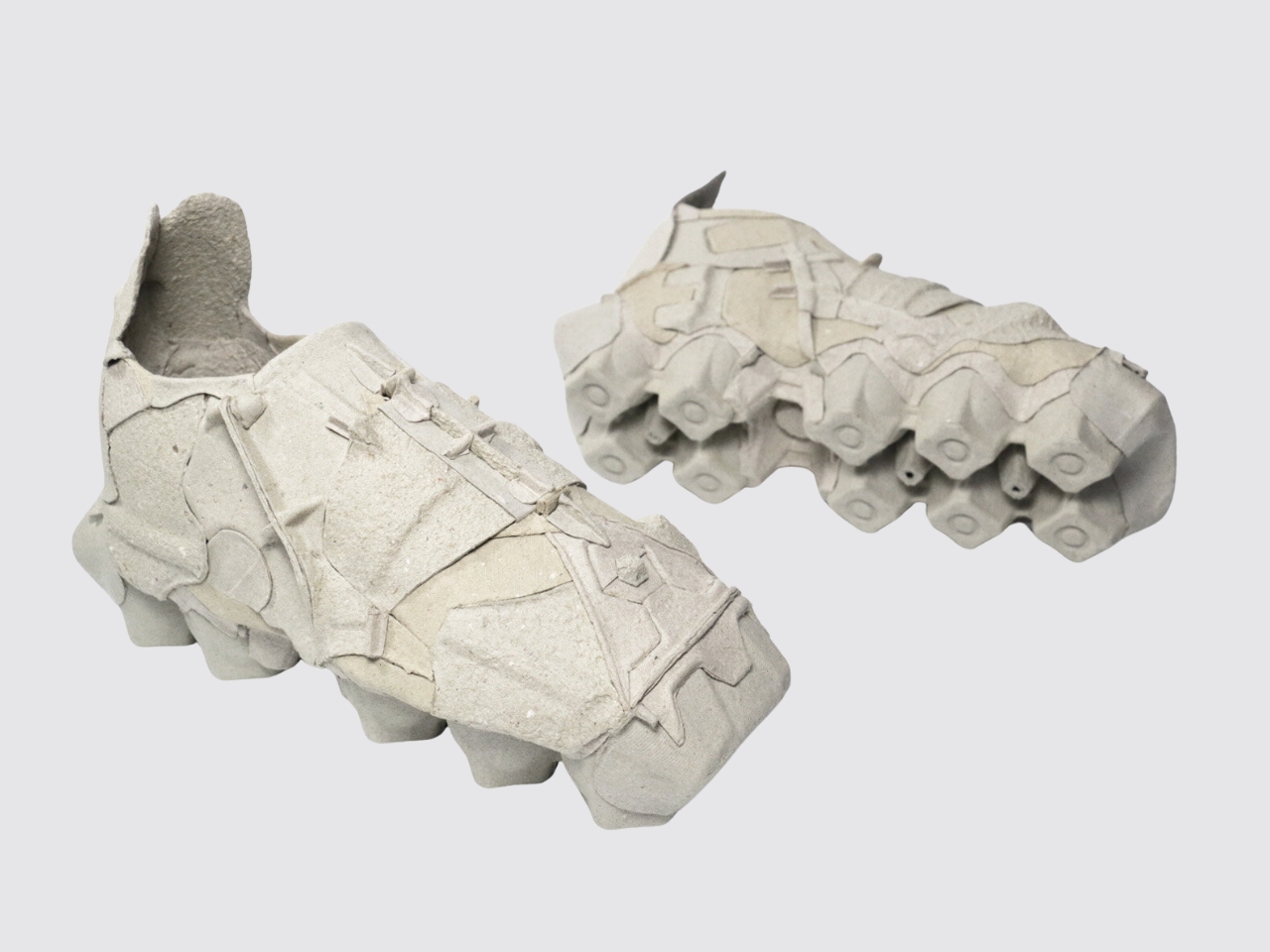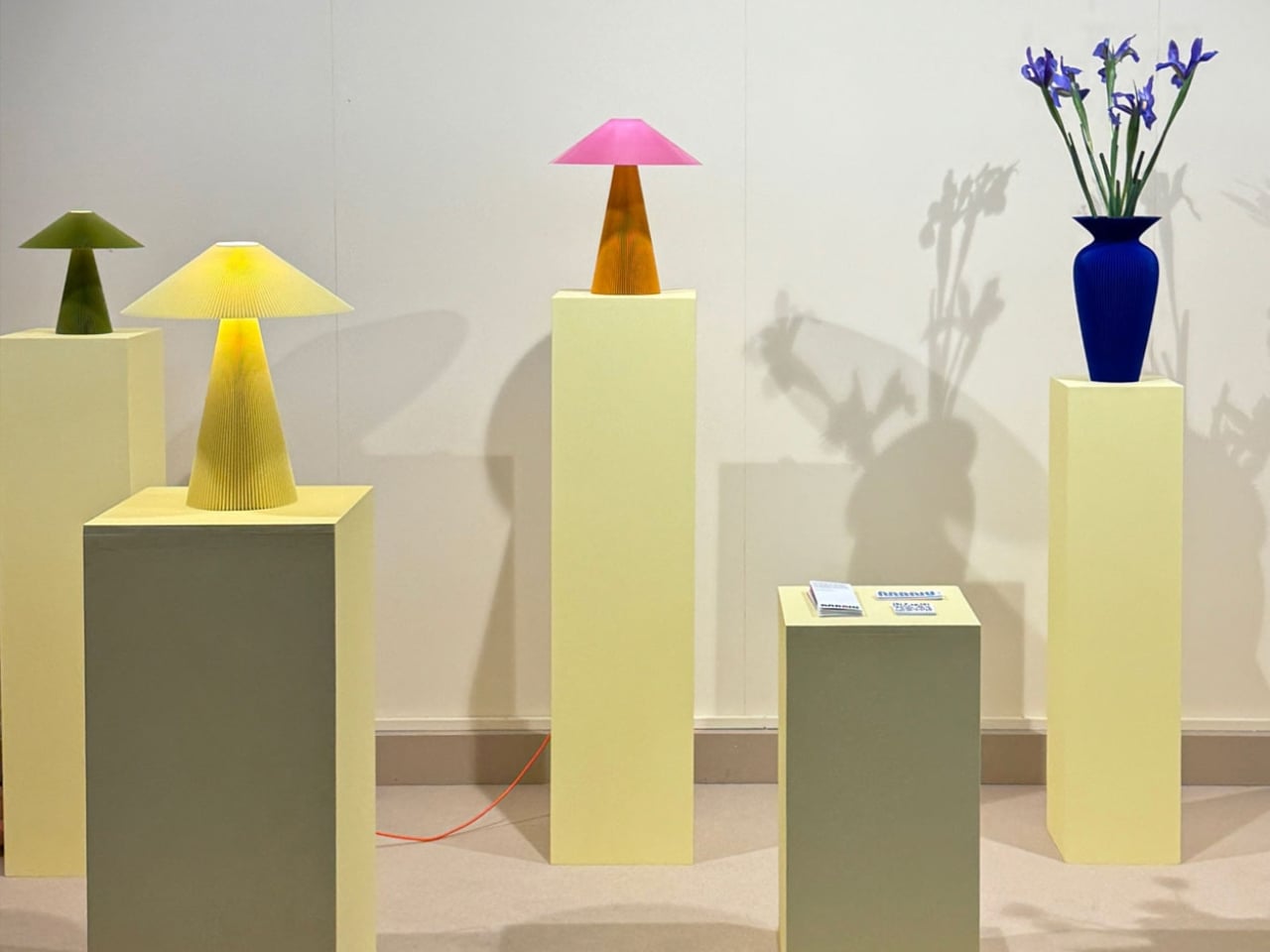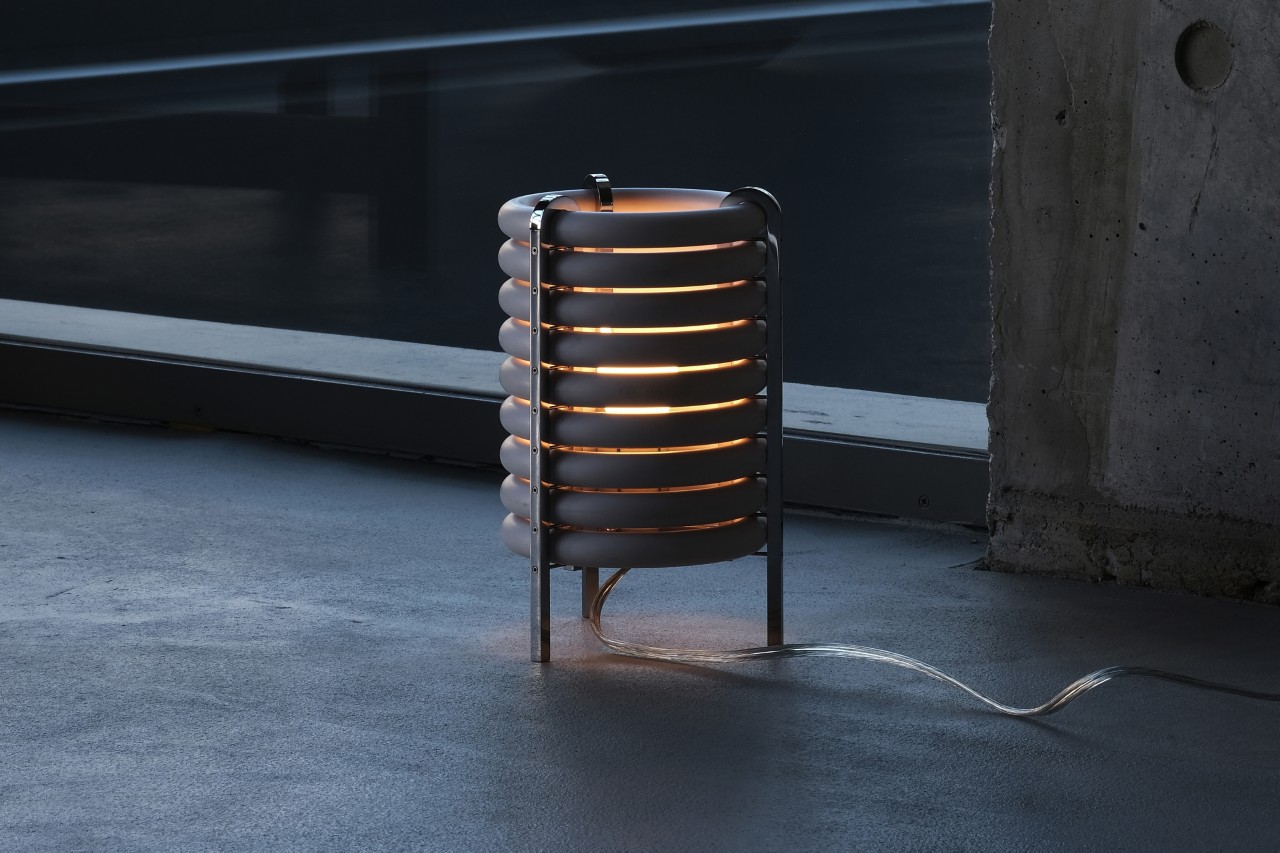#sustainable-design
#sustainable-design
[ follow ]
#architecture #upcycling #adaptive-reuse #3d-printing #affordable-housing #tiny-house #repairability
Design
fromdesignboom | architecture & design magazine
6 days agofirst 3D printed tiny house in luxembourg aims to solve the housing crisis in the country
3D-printed Tiny House in Niederanven demonstrates rapid, low-cost residential construction with solar power, underfloor film heating, and insulated walls to minimize long-term energy use.
fromArchDaily
1 week agoGrand Prize Winners Announced for the 2025 Holcim Foundation Awards
The Holcim Foundation for Sustainable Construction has announced the Grand Prize Winners of the 2025 Holcim Awards, selecting one project from each global region to represent the most impactful approaches to sustainable design in this cycle. This edition marks the introduction of the Grand Prize format, replacing the previous tiered distinctions to better acknowledge diverse regional contexts and avoid hierarchical rankings. Evaluated by juries chaired by Sou Fujimoto (Asia Pacific), Kjetil Trædal Thorsen (Europe), Sandra Barclay (Latin America), Lina Ghotmeh (Middle East and Africa), and Jeanne Gang (North America), the winning projects reflect the Foundation's principles of holistic, transformational, and transferable design.
Remodel
Design
fromdesignboom | architecture & design magazine
1 week agofive interconnected timber volumes under large gable shape off-grid house on japanese island
A self-sufficient residence on Amami Island operates off-grid using solar power, composting, and wood-fuel, employing vernacular forms and modular volumes for climate-adaptive living.
Design
fromdesignboom | architecture & design magazine
1 week agohexagonal wooden canopy crowns villa within moss garden in japan
A mushroom-shaped, hexagonal house in Karuizawa minimizes footprint and visually integrates with native broadleaf forest and moss garden using divided planes and natural materials.
fromYanko Design - Modern Industrial Design News
2 weeks agoThe Best Travel Bags Under $100 Are Made From Recycled Materials - Yanko Design
But a third, more urgent verse has been added to the chorus in recent years: impact. Today, truly exceptional design must also be responsible design. It has to account for its lifecycle, its materiality, and its effect on the world it inhabits. This evolution in thinking is a necessary one, pushing creatives to solve for more than just aesthetics and ergonomics.
Environment
Design
fromArchDaily
2 weeks agoCommunity-Centered Architecture: Redefining the Role of Architects in South America
Architecture across South America is becoming a collaborative, participatory practice that centers community knowledge, co-authorship, and socially and environmentally sustainable spaces.
fromYanko Design - Modern Industrial Design News
2 weeks agoAward-Winning Sculptural Device Makes Water From Air, Not Your Tap - Yanko Design
Kara Pure 2 offers a new vision for home hydration that eliminates these trade-offs entirely. By pulling water straight from the air, mineralizing it with essential nutrients, and presenting it in a sculptural stainless steel form, it changes the simple act of pouring a glass of water into a daily wellness ritual that's as beautiful as it is sustainable and convenient.
Gadgets
Design
fromdesignboom | architecture & design magazine
2 weeks agoseoul design award 2025 crowns winner for nigerian flat-pack, solar-charing hubs
SDA 2025 used the world's first live design judging and awarded Nonfiction Design's Jaza Energy Hubs Grand Prize for reducing rural energy inequality in Nigeria.
fromYanko Design - Modern Industrial Design News
2 weeks agoThis Stove Just Reinvented Firewood With Stainless Steel - Yanko Design
Chen Jun's stainless steel firewood stove isn't just another pretty appliance trying to look good in your Instagram feed. This is serious engineering wrapped in sleek design, tackling real problems that have plagued wood-burning stoves for generations. The secret? A sophisticated modular system that completely rethinks how we approach portable heating and cooking. Here's what makes it clever: the entire stove can be disassembled and reassembled without needing a PhD in engineering.
Design
Renovation
fromdesignboom | architecture & design magazine
2 weeks agofran silvestre restores limestone farmhouse in spain as off-grid home and workspace
An abandoned Empordà farmhouse was restored into Mas Cadalt, preserving traditional limestone masonry while adding modern insulation, bright white interiors, and self-sufficient systems.
fromYanko Design - Modern Industrial Design News
2 weeks agoStanley's Pour Over Kit Might Be the Last Coffee Brewer You'll Ever Need to Buy - Yanko Design
The brand famous for its tumblers (and how incredibly durable they are) is looking to upend the coffee industry too. Stanley's 'Perfect Pour Over Brew Set' is the company's take on pour-overs, redesigning them in a way that's simple, robust, and reusable. The set features a pour-over top (with a metal filter) and and a Stanley cup for its base. No coffee filters, no disposable liners. Every inch of this brew set is designed for travel, durability, and sustainability.
Coffee
fromYanko Design - Modern Industrial Design News
2 weeks agoKartell Revives a 1967 Icon: The KD28 Lamp Gets a Modern Makeover - Yanko Design
If you're not familiar with Joe Colombo, let me paint you a picture. This Italian designer was basically the poster child for optimistic, forward-thinking mid-century design. He created bold, colorful furniture and objects that perfectly captured the era's "the future is bright" energy. Colombo sadly passed away in 1971 at just 41, but his work continues to influence designers today. The KD28 lamp is a perfect example of why his pieces remain relevant decades later.
Design
fromYanko Design - Modern Industrial Design News
3 weeks agoTop 5 Game-Changing Camping Gear Designs That Redefine Outdoor Adventures - Yanko Design
Modern camping gear has evolved beyond basic survival tools into sophisticated equipment that enhances outdoor experiences without compromising authenticity. Today's innovative designs merge cutting-edge technology with thoughtful functionality, creating products that solve real problems while maintaining the spirit of adventure. These breakthrough designs represent a new era where comfort, sustainability, and wilderness exploration coexist harmoniously. The latest camping innovations prove that smart engineering can transform ordinary outdoor challenges into opportunities for enhanced adventure.
Gadgets
Real estate
fromArchDaily
3 weeks agoBarangaroo South Masterplan by RSHP and Lendlease Completes a 15-Year Transformation of Sydney's Western Waterfront
Barangaroo South transformed a 22-hectare former container port into a mixed-use, carbon-neutral waterfront precinct reconnecting the harbour edge to Sydney's urban core.
fromdesignboom | architecture & design magazine
3 weeks agocarbon-negative bamboo pavilion by cave urban gives new life to disused car park in bali
BaleBio, a bamboo pavilion designed by Cave Urban for Bauhaus Earth's ReBuilt initiative, pioneers carbon-negative architecture in Bali while reimagining the traditional communal spaces of the island for a changing climate. Rising above the sands of Mertasari Beach in Denpasar, the 84-square-meter structure transforms a disused car park into a living community hub, an open meeting space that merges environmental performance with social purpose.
Environment
Photography
fromdesignboom | architecture & design magazine
1 month agofrancis kere arrives in northern germany with timber and rammed earth museum ehrhardt
A 1,400 sqm timber and rammed-earth museum by Francis Kéré in Plüschow houses photography and contemporary art, centering Alfred Ehrhardt's New Objectivity legacy.
fromYanko Design - Modern Industrial Design News
1 month ago5 Sustainable Travel Products That Don't Look Like They're Made From Grass - Yanko Design
Following a sustainable lifestyle is important even when you are traveling, as eco-conscious travel blends innovation with environmental responsibility. By focusing on renewable materials, energy efficiency, and waste reduction, travelers can make eco-friendly choices, and designers can create products that support sustainability and functionality. Whether it's durable luggage or solar-powered gadgets, thoughtfully designed items help reduce a traveler's footprint. As more people seek meaningful and responsible journeys, sustainable design plays an important role in shaping the future of travel and protecting the planet.
Environment
fromDesign Milk
1 month agoAriane van Dievoet Explores New Ways to Work Offcuts
Because fragments vary in size, shape, and color, the final design is nearly impossible to replicate. The second is quality. Many fragments, especially those sourced from demolition sites, come with flaws. Rather than see these issues as limitations, van Dievoet embraces them, allowing constraints to shape the work. "Creating from materials that have already been used forces me to take into account their shape, thickness, and any breaks," she explains.
Graphic design
fromYanko Design - Modern Industrial Design News
1 month agoThis $78K Tiny House Has Curved Walls & Luxury Most Homes Never Get - Yanko Design
Australia's tiny house movement has found its perfect ambassador in the Harper, a stunning 20-square-meter dwelling that redefines what small-scale living can be. Created by Gold Coast-based Black Clay, this compact home proves that downsizing doesn't mean downgrading when it comes to style and comfort. The Harper stretches eight meters long and 2.5 meters wide, built on a robust triple-axle steel trailer designed for full transportability. What immediately strikes visitors is the exterior's sophisticated blend of curved Decobatten aluminum and Colorbond steel cladding.
Design
Design
fromdesignboom | architecture & design magazine
1 month agobjarke ingels designs johns hopkins student center as 'climbing village' of clustered boxes
The Bloomberg Student Center at Johns Hopkins is a 150,000-square-foot, mass-timber, energy-efficient student-life hub with interconnected pavilions, rooftop photovoltaics, and flexible communal interiors.
fromYanko Design - Modern Industrial Design News
1 month agoMuratto x Momentum Collection transforms spaces with eco-chic innovation - Yanko Design
When two design powerhouses come together, the results can be truly transformative. The new Muratto x Momentum collection is a testament to the power of creative collaboration, merging the expertise of Momentum Textiles & Wallcovering with the innovative approach of Muratto. This partnership has produced a collection that is not only visually stunning but also deeply rooted in sustainability and natural inspiration, making it a standout choice for anyone looking to elevate their interiors with a conscience.
Design
Gadgets
fromYanko Design - Modern Industrial Design News
1 month agoLapso Bacteria Cellulose Lamp is a Translucent Lighting Revolution - Yanko Design
Lapso lamp is a translucent, biodegradable lighting object made from bacterial cellulose, combining biofabrication, handmade ruffled forms, and low-waste sustainable production.
fromwww.archdaily.com
1 month agoCODEC Training Centre - Kuakata / Community Development Centre (CODEC)
The Kuakata Training Center, designed by CODEC Design Studio, is a purpose-built facility supporting skill development and capacity building for coastal communities in Bangladesh. Positioned close to fishing settlements, ecological zones, and tourist routes, it offers residential training on coastal resource management, sustainable tourism, and disaster preparedness. Developed through a phased construction process, the project emphasizes quality, sustainability, and contextual relevance. Local contractors and laborers were engaged from the outset, ensuring not only construction efficiency but also skill transfer and community ownership of the center.
Design
fromwww.archdaily.com
1 month agoClaremont McKenna College Robert Day Sciences Center / BIG
The new Robert Day Sciences Center at Claremont McKenna College maximizes multidisciplinary integration and interaction: each level of the 135,000-sq-ft building is oriented in a different direction, channeling the flow of people and ideas between the labs, classrooms, and the surrounding campus. Commissioned in 2020, the Robert Day Sciences Center serves a community of 1,400 students. The center is BIG's first built project in Los Angeles, and the first completed building in
Design
Environment
fromWIRED
1 month agoGear for Good: 20 Eco-Friendly Items That Score a Win for the Planet-and for You
Consumer goods accrue carbon footprints before purchase; using recycled materials, eco-minded manufacturing, waste-reducing designs, and enhanced durability reduces that environmental impact.
fromCurbed
1 month agoA Sophisticated Dome House in Ghent for $1.12 Million
But the rounded roof isn't just a fanciful design gesture; it offers energy-saving benefits, explained Sarah Kardos, an associate broker at Four Seasons Sotheby's International Realty who shares the $1.12 million listing with associate broker Alexander Rubin. The shape increases natural airflow and creates even temperatures with only one degree of difference between the floor and the ceiling (in traditional rooms, the ceiling can be up to ten degrees warmer). That makes the home unusually comfortable, says Kardos.
New York Islanders
Remodel
fromYanko Design - Modern Industrial Design News
1 month agoThe Bamboo Yoga Deck Creates a Nest of Serenity and Sustainable Wellness in Nature - Yanko Design
A suspended bamboo yoga deck elevates practice through natural materials, intimate scale, and an immersive outdoor setting that enhances serenity.
fromYanko Design - Modern Industrial Design News
1 month agoThe Tiny Getaway: How An Upside-Down Design Is Revolutionizing Small Space Living - Yanko Design
Most tiny homes cram living spaces into predictable layouts, but one Romanian company decided to turn that concept literally upside down. The Tiny Getaway by Eco Tiny House is a compact dwelling that's redefining how we think about small space living through its innovative "upside-down" layout, proving that sometimes the best solutions come from breaking conventional wisdom.
Design
Environment
fromYanko Design - Modern Industrial Design News
1 month agoPlates made from bamboo fiber brings sustainability to your table - Yanko Design
Re-ing Bamboo Fiber Plates replace plastic and PLA with 100% plastic-free bamboo fiber tableware, offering renewable, antibacterial, and durable alternatives.
fromYanko Design - Modern Industrial Design News
1 month agoJaza Energy Hubs light up communities and empowers women - Yanko Design
Jaza Energy Hubs, created by the Nigerian‑based studio Nonfiction Design, have quickly become a model of clean, affordable energy for off‑grid villages. The project showcases a modular solar hub that can be shipped flat, unpacked and assembled in a single day with only basic tools. Each hub generates enough electricity to run lights, phones, fans and small shop equipment, replacing costly and polluting diesel generators and kerosene lamps.
Environment
fromwww.archdaily.com
2 months agoB-One Office Building / CF Mller
Franz Bruck + 50 Category: Office Buildings Clients: BDP Real Estate GmbH Collaborators: Transsolar Energietechnik Kitchen Planning: Kosterke Fire Consultants: HHP Berlin More SpecsLess Specs Franz Bruck Text description provided by the architects. The new Berlin Hyp Office Building, named "B-One," represents forward-thinking, climate-friendly corporate architecture at the gateway to Berlin's City-West district. Designed by C.F. Mller Architects, this 11-story building demonstrates environmental responsibility while establishing an architectural reference point at the intersection of Landwehrkanal and Corneliusbrucke.
Design
fromdesignboom | architecture & design magazine
2 months agoparametric batik patterns trace indonesian consulate building's facade in jeddah, saudi arabia
The Indonesian Consulate Building in Jeddah by Ibrahim Joharji Architects contributes to the architectural landscape of diplomatic facilities in Saudi Arabia, where design carries both functional and symbolic roles. Diplomatic buildings are not only workplaces but also representations of national identity, requiring architecture to mediate between protocol, security, and cultural expression. The project is structured around a hierarchy of use, organizing spaces for diplomats, administrators, and staff through layered circulation systems. This spatial framework embeds distinctions of function and authority into the overall plan.
Design
fromYanko Design - Modern Industrial Design News
2 months ago5 Best Kitchen Gadgets & Tools Of September 2025 - Yanko Design
September 2025 has delivered some of the most exciting kitchen innovations we've seen this year. The kitchen in 2025 is smarter, greener, and more beautiful than ever before. With sustainable design becoming essential and smart technology leading the way, these five standout gadgets represent the perfect fusion of form and function. Each piece showcases how contemporary kitchen design is evolving to meet modern lifestyle demands while maintaining aesthetic appeal.
Gadgets
fromRemodelista
2 months agoA Passive Retrofit for Children's Line Oeuf's Brooklyn Headquarters
If you've found yourself infatuated with a crib or toddler bed in the last 20 years, chances are they were designed by Oeuf. The Brooklyn-based lifestyle brand is the brainchild of Sophie Demenge and Michael Ryan, a couple who have been making things together since meeting on a city sidewalk at 2 am outside a furniture fair party. Sophie, who grew up in Paris, was at the time about to graduate with a degree in industrial design from Pratt Institute,
Design
E-Commerce
fromApartment Therapy
2 months agoWe Tested (and Rated!) All the Sofas at Blu Dot - Here Are the Best to Suit Your Style and Space (They're on Sale!)
Blu Dot makes thoughtfully designed, sustainable modern furniture using premium materials, producing durable, comfortable, loungeable sofas that evolve with lifestyle and last for years.
Gadgets
fromstupidDOPE | Est. 2008
2 months agoPOP Phone Relaunch: Retro Handset Meets Modern USB-C Connectivity | stupidDOPE | Est. 2008
POP Phone revives an analog handset with USB-C plug-and-play, high-quality microphone and speaker, ergonomic design, and recycled materials for improved video-conferencing.
Design
fromYanko Design - Modern Industrial Design News
2 months agoFloating Above The Pacific: Casa Yuri's Dramatic Clifftop Design Redefines Mexican Coastal Living - Yanko Design
Casa Yuri is a contemporary oceanfront Mexican residence combining monumental traditional elements, passive sustainability, and dramatic cantilevered architecture to connect interior life with the Pacific.
Environment
fromYanko Design - Modern Industrial Design News
2 months ago10 Best Eco-Friendly Designs Of September 2025 - Yanko Design
High-performance sustainable products combine advanced materials and engineering with environmental responsibility without sacrificing style, functionality, or hygiene.
fromArchDaily
2 months agoThe Architect as Mediator of Materials: Lessons from Hybrid Habitats
With deep roots, sturdy trunks, and the ability to withstand extreme temperatures, date palms (Phoenix dactylifera) are among the species best adapted to the arid desert environment. It is no coincidence that in many local indigenous cultures they are known as the "tree of life," as their fruits, leaves, and trunks have provided food, shelter, and building materials for thousands of years. Without them, much of human settlement in desert regions would not have been possible.
Design
Design
fromdesignboom | architecture & design magazine
2 months agoconcrete walls shape circular 'pictograma' winery around rain-harvesting courtyard in mexico
Pictograma is a circular 1,963-square-meter winery in Valle de Guadalupe that uses a radial plan, local materials, and sustainable water and landscape strategies.
Design
fromdesignboom | architecture & design magazine
2 months agocopper and glass frame beijing cultural hub for mammoth ivory carving by chuxin tuoyuan
The Beijing Mammoth Ivory Engraving Factory Exhibition Center merges traditional Chinese carving, architectural motifs, and sustainable contemporary design with copper articulation and innovative display technologies.
fromArchDaily
2 months agoMore Than Parking: 12 Projects to Reclaim Urban Space
Marginalized in architectural discourse and often dismissed as purely functional, parking garages remain among the most ubiquitous structures in the urban landscape. Designed to accommodate the needs of private vehicles, they occupy central locations, shape skylines, and consume considerable resources, yet rarely receive the same attention - or architectural care - as cultural institutions, schools, or housing. Despite their prevalence, these buildings tend to fade into the background of daily life, treated as infrastructural necessities rather than as design opportunities.
Design
[ Load more ]








